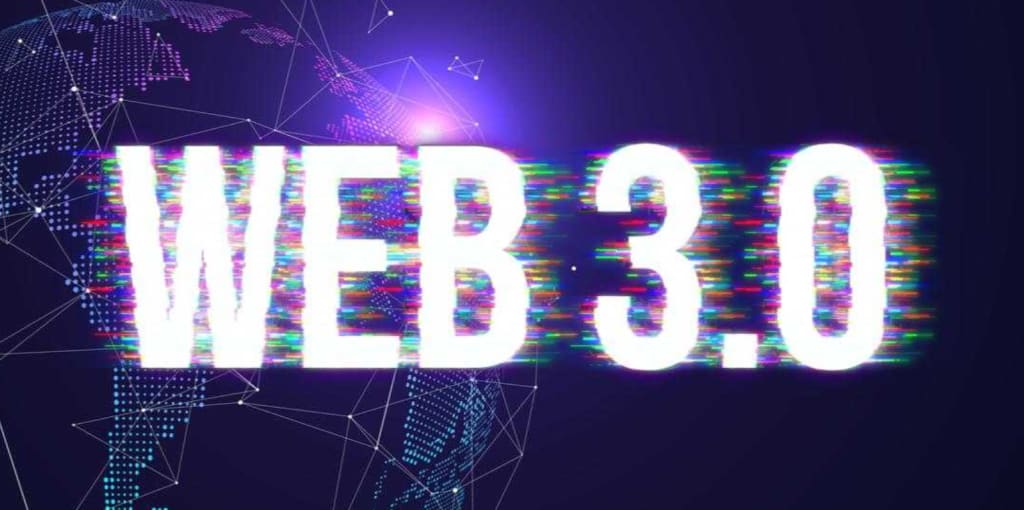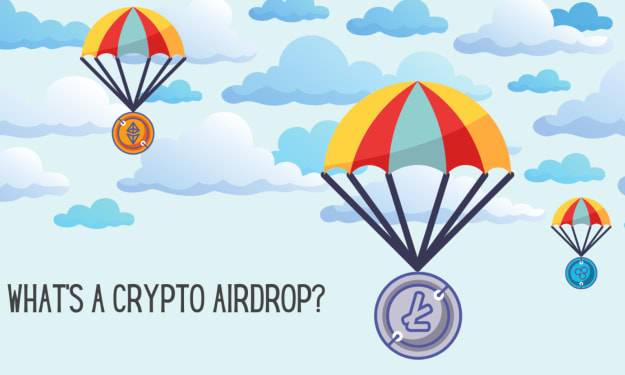
Introduction
The internet has undoubtedly transformed the world, connecting individuals, businesses, and societies like never before. However, the current internet landscape has its limitations, including issues of centralization, security, and privacy. Fortunately, Blockchain and Web3 technology offer new possibilities for a more secure, decentralized, and trustworthy internet. This article explores the potential impact of Blockchain Web3 on the internet and how it could revolutionize the way we interact online. We will discuss the key features of Blockchain and Web3, the impact of this technology on the internet, and its use cases. We will also examine the challenges and concerns that come with this technology and predict the future of the internet with Blockchain Web3.
Understanding Blockchain and Web3
Blockchain technology is a distributed ledger system that allows for secure and transparent transactions without the need for intermediaries. It is built on a network of nodes, and each node stores a copy of the ledger, making it difficult to alter or hack. Blockchain is decentralized, meaning there is no single point of control or authority.
Web3 is the next evolution of the internet, which is built on top of Blockchain technology. It is a decentralized, trustless network that enables users to interact with decentralized applications (dApps) using cryptocurrencies. Web3 has three key features:
- Decentralization: Web3 is decentralized, meaning there is no single point of control or authority. This means that no one entity has control over the network or can manipulate it.
- Trustless: Transactions on the Web3 network are trustless, meaning that they do not require intermediaries, such as banks or third-party payment processors. This increases the security and transparency of transactions.
- Interoperability: Web3 is designed to be interoperable, allowing different Blockchains and dApps to communicate with each other seamlessly.
Compared to Web2, which is the current internet landscape dominated by centralized platforms, Web3 offers greater security, transparency, and user control. It is also resistant to censorship, making it an attractive option for those who value privacy and freedom of expression.
Impact of Blockchain Web3 on the Internet
The impact of Blockchain Web3 on the internet is significant, as it offers a more secure, decentralized, and trustworthy internet. Here are some of the key impacts:
- Decentralization: Blockchain Web3 enables the decentralization of the internet, which means that there is no single point of control or authority. This reduces the risk of data breaches and hacks since there is no central point of failure.
- Security and Privacy: With Blockchain Web3, users have more control over their data and privacy. Transactions are secured with cryptographic protocols, which makes it difficult to alter or hack. Users have control over their private keys, which ensures that only they have access to their data.
- Disruption of Business Models: Blockchain Web3 has the potential to disrupt existing business models by removing intermediaries and reducing transaction costs. This could lead to new business models and revenue streams for businesses.
- Opportunities for Innovation: Blockchain Web3 provides a platform for innovation, allowing developers to create new applications that were not possible before. For example, dApps can enable new ways of conducting business, such as decentralized finance (DeFi) and social media platforms that put users in control of their data.
Overall, Blockchain Web3 has the potential to transform the internet landscape and create new opportunities for businesses and users.
Use Cases of Blockchain Web3
Blockchain Web3 has several use cases that showcase its potential to disrupt traditional industries and create new opportunities. Here are some of the most promising use cases:
- Cryptocurrencies and Decentralized Finance (DeFi): Cryptocurrencies are digital assets that use Blockchain technology to enable secure, decentralized transactions. DeFi is a subset of the cryptocurrency ecosystem that aims to create financial services without intermediaries, such as banks. This includes lending and borrowing platforms, decentralized exchanges, and stablecoins.
- Decentralized Social Media: Social media platforms have been criticized for their centralized control and lack of transparency. Decentralized social media platforms built on Blockchain Web3, such as Steemit and Minds, allow users to own and control their data, and monetize their content directly.
- Supply Chain Management: Blockchain Web3 can be used to create transparent and traceable supply chains, which can increase efficiency and reduce fraud. For example, Walmart uses Blockchain technology to track the origin of its food products.
- Gaming and Virtual Worlds: Blockchain Web3 can enable new possibilities in gaming and virtual worlds by allowing players to own and trade virtual assets. This creates new revenue streams for game developers and players.
Overall, Blockchain Web3 has a wide range of use cases that demonstrate its potential to transform industries and create new opportunities for businesses and individuals alike.
Challenges and Concerns with Blockchain Web3
While Blockchain Web3 technology has the potential to revolutionize the internet, it also faces several challenges and concerns that need to be addressed. Here are some of the most pressing issues:
- Scalability: Currently, Blockchain Web3 networks can be slow and have limited capacity. This can make it difficult for them to handle large-scale transactions and support mass adoption.
- Regulation: Blockchain Web3 operates outside of traditional regulatory frameworks, which can make it difficult to enforce laws and protect consumers. There is a need for clear regulatory guidance to ensure that Blockchain Web3 operates within legal and ethical boundaries.
- Interoperability: While Blockchain Web3 is designed to be interoperable, there are still challenges in achieving seamless communication between different Blockchains and dApps. This can limit the potential of the technology and create fragmentation in the ecosystem.
- Energy Consumption: Some Blockchain Web3 networks, such as Bitcoin, consume large amounts of energy to validate transactions, which has raised concerns about their environmental impact.
- User Experience: The user experience of Blockchain Web3 applications can be challenging, requiring users to manage their private keys and navigate complex interfaces. This can limit adoption and create barriers to entry for non-technical users.
Overall, addressing these challenges and concerns will be essential for the widespread adoption of Blockchain Web3 technology and its potential to create a more decentralized and trustworthy internet.
How Blockchain Web3 is Changing the Game
Blockchain Web3 is changing the game in a number of ways, primarily through its decentralized model, enhanced security and privacy features, and increased user control.
A. Decentralization
One of the main features of Blockchain Web3 is its decentralized model. In contrast to the current centralized model of the internet, where a few large corporations hold significant control over user data and online interactions, Blockchain Web3 allows for a peer-to-peer network where users have greater control over their online presence. This decentralization also means that there is no central point of failure or vulnerability, making the system more resistant to hacking and cyberattacks.
B. Security
Blockchain Web3 also offers enhanced security features through the use of cryptography and distributed ledger technology. Data stored on a blockchain is encrypted and decentralized, making it much more difficult to hack or tamper with. This increased security is particularly important for sensitive information such as financial transactions or personal data.
C. Privacy
Privacy is another area where Blockchain Web3 is changing the game. With the current centralized model of the internet, users often have little control over how their data is collected, stored, and used. Blockchain Web3 offers increased privacy through the use of encryption and decentralized storage. Users can control how their data is used and shared, and they can also choose to remain anonymous.
D. User Control
Finally, Blockchain Web3 offers increased user control over their online interactions. With the current centralized model of the internet, users often have to rely on third-party services for online transactions and interactions. With Blockchain Web3, users can interact directly with other users without the need for intermediaries. This increased control allows for greater transparency and reduces the risk of fraud and other malicious activities.
Overall, Blockchain Web3 is changing the game by offering a more decentralized, secure, and private model for the internet. By placing control back in the hands of users, Blockchain Web3 has the potential to revolutionize the way we interact online and to unlock new opportunities for innovation and development.
The Future of the Internet with Blockchain Web3
The future of the internet with Blockchain Web3 is a promising one, with many potential benefits and possibilities for innovation.
A. Impact on the Future of the Internet
Blockchain Web3 has the potential to significantly impact the future of the internet. With its decentralized model, enhanced security and privacy features, and increased user control, Blockchain Web3 offers a more transparent and democratic internet. It could lead to a shift away from the current centralized model, and towards a more open and collaborative approach to online interactions.
B. Potential for Innovation
Blockchain Web3 also has the potential to unlock new opportunities for innovation and development. With its decentralized model and increased user control, it could lead to new forms of online collaboration and creativity. For example, decentralized applications (DApps) that operate on a blockchain could allow for new forms of digital art, gaming, and social interaction.
C. New Business Models
Blockchain Web3 could also lead to new business models and revenue streams. With its decentralized model, users could directly benefit from their online activities without the need for intermediaries. For example, social media platforms that operate on a blockchain could allow users to earn tokens for their content or interactions, which could then be traded for goods or services.
Conclusion
In conclusion, Blockchain Web3 is poised to revolutionize the internet by offering a more decentralized, secure, and private model. Through its use of distributed ledger technology, cryptography, and peer-to-peer networking, Blockchain Web3 is changing the game by placing control back in the hands of users. With increased user control, transparency, and security, Blockchain Web3 has the potential to unlock new opportunities for innovation and development in a wide range of industries. As more businesses and individuals adopt Blockchain Web3, the future of the internet looks brighter and more promising than ever before.
About the Creator
Samuel
I write about Science/Tech/Business & Anything that can give value to people ❤️
I'm on YouTube too guys feel free to check out my channel here: www.youtube.com/@sambladeco






Comments
There are no comments for this story
Be the first to respond and start the conversation.